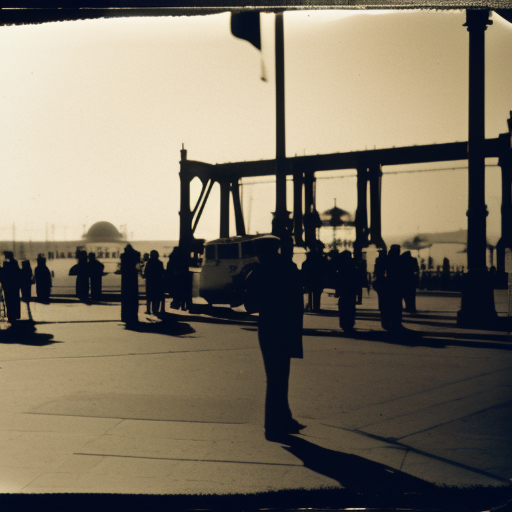Pan-American Exposition: A Showcase of Progress and International Cooperation
The Pan-American Exposition was a world’s fair held in Buffalo, New York, from May 1 to November 2, 1901. It was organized to celebrate the progress and achievements of the Americas and to promote international cooperation. The event attracted millions of visitors and showcased the latest advancements in technology, industry, and culture.
Background and Planning
The idea for the Pan-American Exposition originated from the Pan-American Conference held in 1889, where representatives from various American nations discussed ways to strengthen economic and political ties. The conference proposed the idea of a fair that would bring together the countries of the Americas to showcase their achievements and foster cooperation.
After years of planning and fundraising, the Pan-American Exposition was finally held in Buffalo, New York. The city was chosen due to its strategic location as a transportation hub and its proximity to the Great Lakes, which facilitated trade and communication with other American nations.
The Exposition Grounds
The exposition grounds covered 350 acres and featured numerous buildings and attractions. The centerpiece of the fair was the Electric Tower, a 375-foot tall structure illuminated by thousands of electric lights. Other notable buildings included the Temple of Music, the Manufacturers and Liberal Arts Building, and the Agricultural Building.
The fairgrounds also included beautiful gardens, lagoons, and fountains, providing a picturesque setting for visitors to explore. The landscaping was designed to showcase the natural beauty of the region and create a peaceful atmosphere for attendees.
Highlights and Attractions
The Pan-American Exposition offered a wide range of attractions and exhibits. One of the most popular exhibits was the Machinery and Transportation Building, which showcased the latest innovations in machinery, automobiles, and transportation systems. Visitors marveled at the displays of steam engines, electric motors, and new modes of transportation.
Another highlight was the Ethnology Building, which displayed artifacts and cultural exhibits from various American nations. This exhibit aimed to promote understanding and appreciation of the diverse cultures and indigenous peoples of the Americas.
The fair also featured a midway, a popular entertainment area with amusement rides, games, and shows. Visitors could enjoy thrilling rides on the Ferris wheel, watch acrobatic performances, and sample a variety of international cuisines.
Presidential Assassination
Tragically, the Pan-American Exposition was marred by the assassination of President William McKinley on September 6, 1901. McKinley was shot by anarchist Leon Czolgosz while attending a reception at the Temple of Music. Despite initial hopes for his recovery, McKinley succumbed to his injuries on September 14.
The assassination cast a shadow over the fair and led to increased security measures. Theodore Roosevelt, then Vice President, was sworn in as the 26th President of the United States following McKinley’s death.
Legacy and Impact
Despite the tragic events surrounding McKinley’s assassination, the Pan-American Exposition left a lasting legacy. It showcased the progress and achievements of the Americas, fostering a sense of international cooperation and unity. The fair also played a significant role in promoting Buffalo as a center of industry and commerce.
The Pan-American Exposition demonstrated the potential of technology and innovation to improve people’s lives. It highlighted the advancements in electricity, transportation, and machinery that were transforming society at the turn of the 20th century.
In conclusion, the Pan-American Exposition was a monumental event that celebrated progress, international cooperation, and cultural diversity. It provided a platform for nations to showcase their achievements and fostered a spirit of unity among the Americas. Despite the tragic assassination of President McKinley, the fair’s legacy lives on as a testament to the advancements of the time and the potential for global collaboration.












